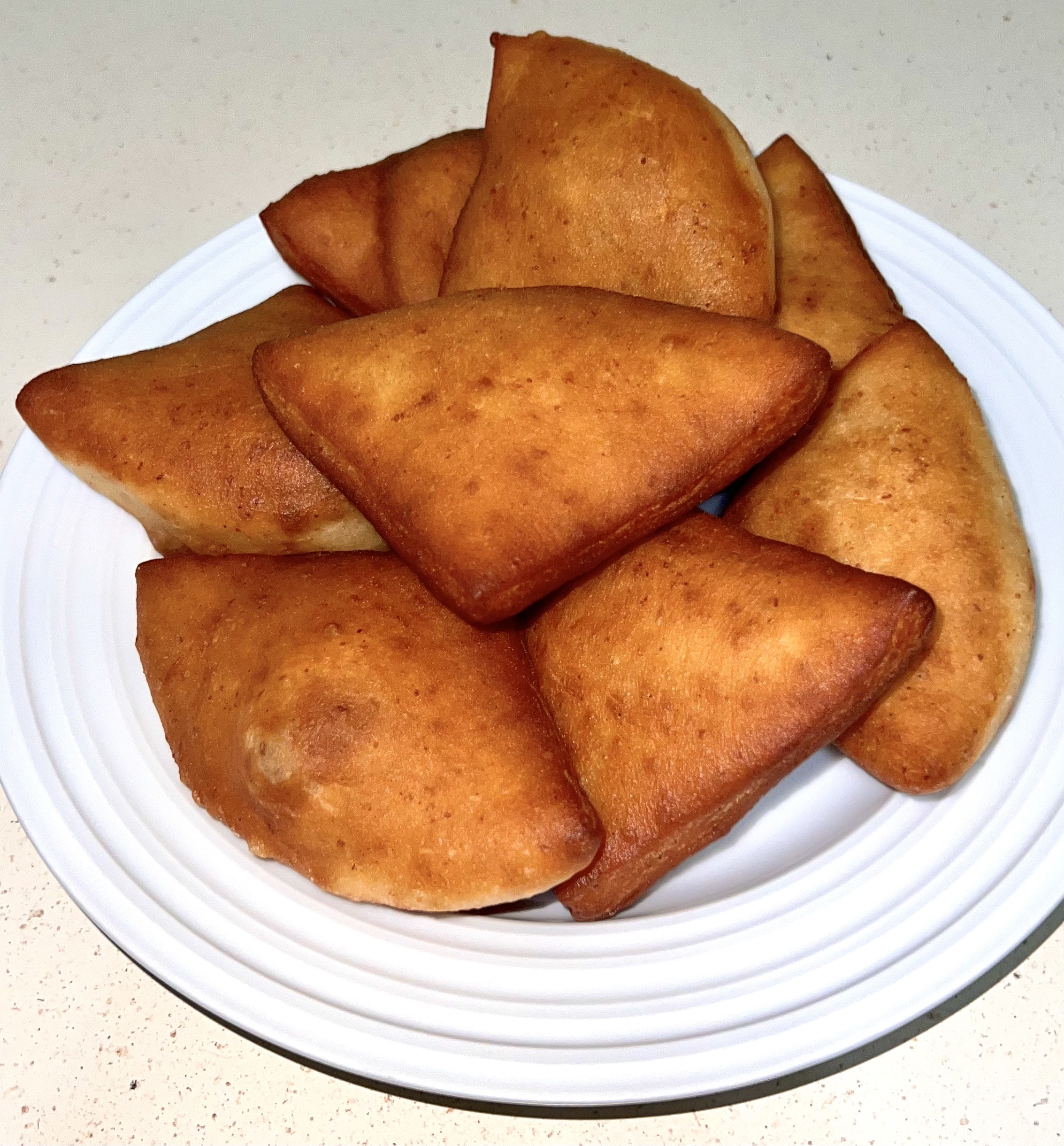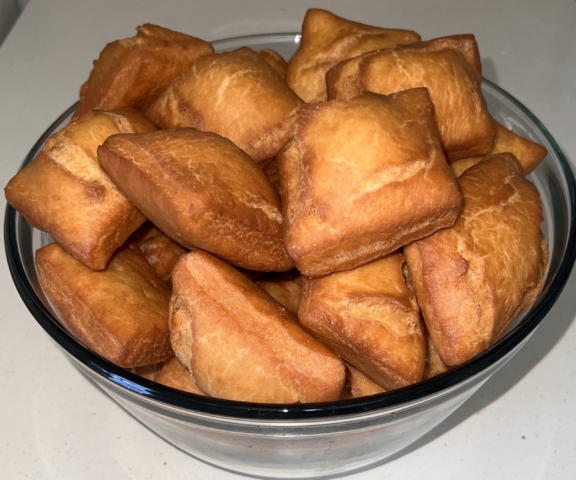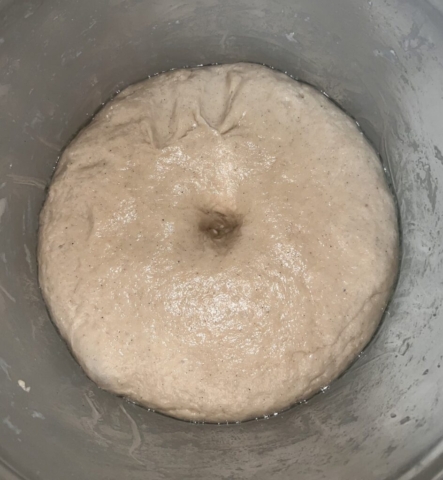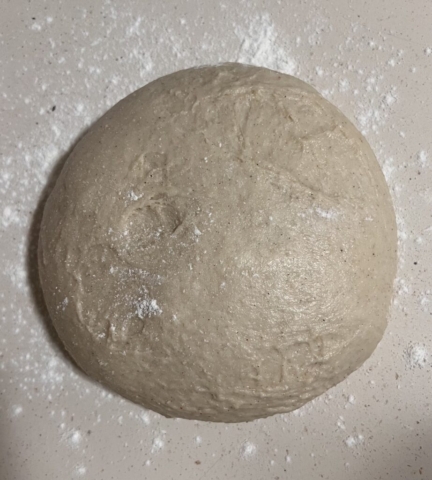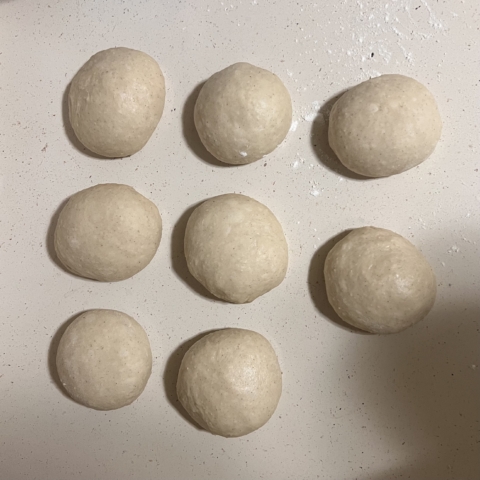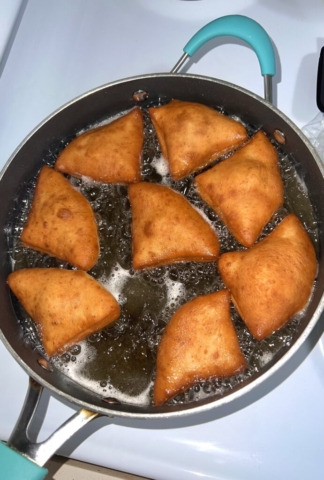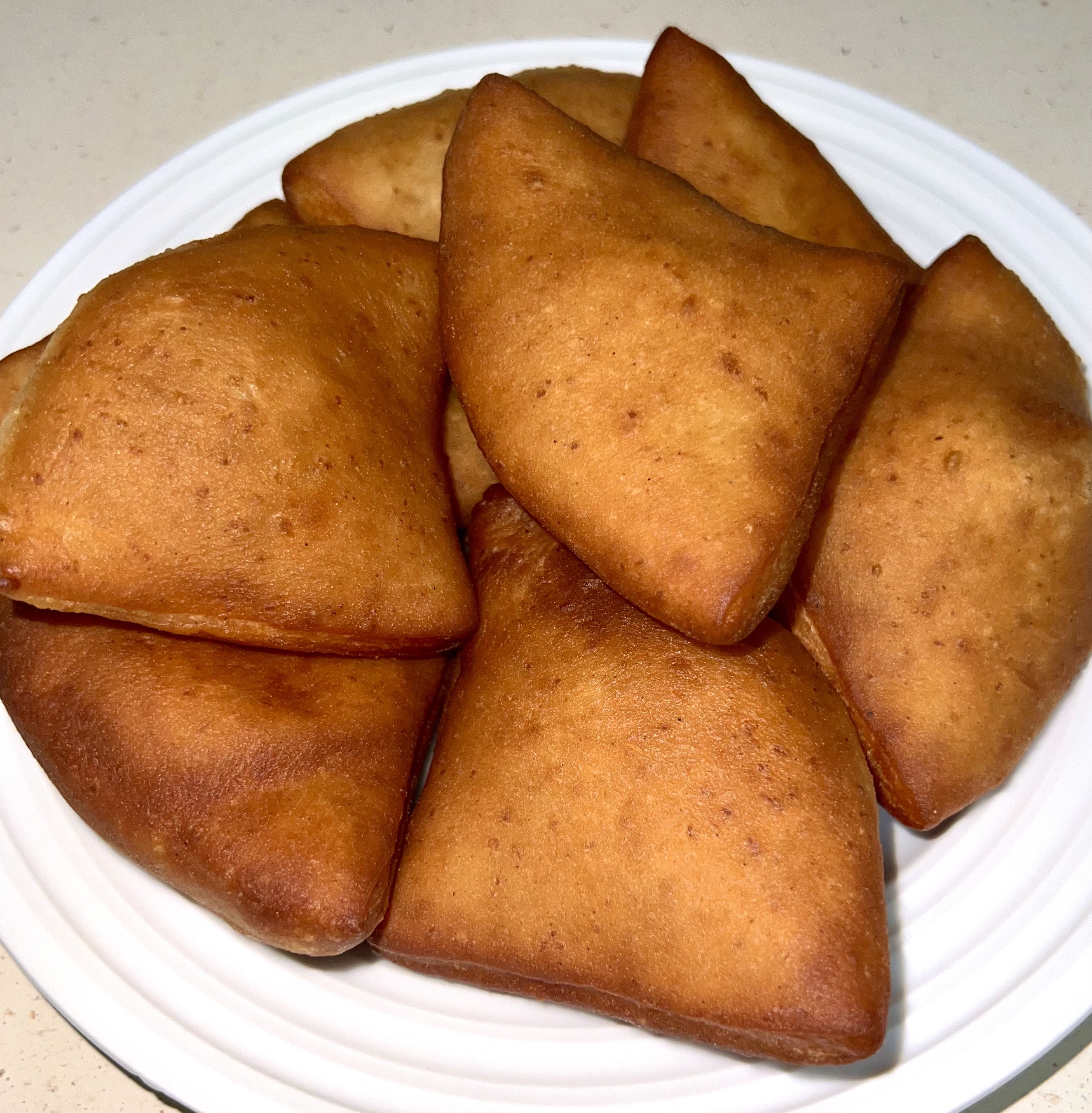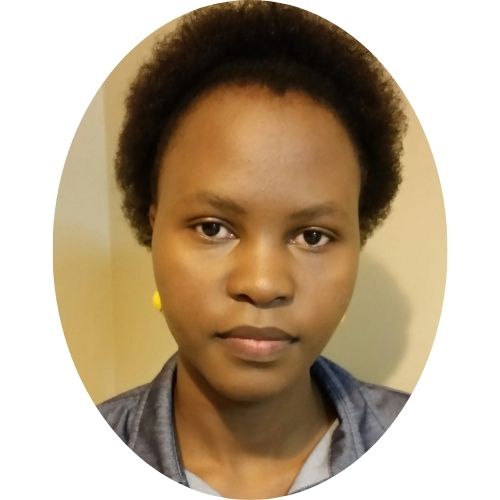This post may contain affiliate links, which means I may receive a commission from purchases made through the links.
What is Mahamri?
Mahamri is a sweet fried dough whose main ingredients are coconut milk, sugar, and yeast. It is a popular breakfast item on the Swahili coast, but it is also commonly eaten throughout Kenya and Tanzania. The key to making the best mahamri is including all the essential ingredients and measuring each of them correctly. Otherwise, Mahamri can very easily come out dry or with a flat taste. This mahamri recipe includes a step-by-step guide plus additional notes and tips on how to make the crispiest and tastiest mahamri. I hope you love it as much as I do.
Do Mahamri and Maandazi mean the same thing?
Not really, but this may also depend on what part of East Africa one is from. There are East Africans who use the two terms interchangeably. However, I’ve known them to be different. For starters, Mahamri is more popular along the coast where coconut milk is also an extremely popular ingredient in many recipes. Maandazi, on the other hand, is more popular upcountry. See more differences below.
Differences between Mahamri and Maandazi
- Mahamri recipe uses yeast as the rising agent while maandazi uses baking powder.
- Mahamri commonly uses coconut milk as the liquid for making dough while maandazi uses dairy milk.
- Cardamom is the most preferred aroma booster for mahamri while cinnamon and lemon zest are the preferred ones for maandazi.
- Well-made mahamri are usually well-risen and partially hollow on the inside, while maandazi is more packed or compact.
- Finally, Mahamri may spot a white strip around the middle. This strip usually results from the extensive swelling of the mahamri as they fry in the oil, which causes the middle part to not come in contact with hot oil for browning to occur.
Ingredients for this Mahamri Recipe
- All-purpose flour: you will need this so you can control what ingredients you add.
- Yeast: both instant and active dry yeast work just fine for this recipe. If you are using active dry yeast, activate it in warm milk for 10 minutes before adding it to the flour.
- Butter: adds to the soft texture of the interior and the crispness of the exterior of the mahamri. Go for unsalted butter to limit the salt content in the dough. If you use salted butter, no need to add any more salt.
- Coconut milk: Prepare fresh coconut milk for this recipe. See instructions on how to do so in the section that follows.
- Dairy milk: adds richness to the coconut milk and elevates the texture of mahamri. Feel free to replace this portion with coconut milk if you do not wish to use dairy milk.
- Sugar: a required ingredient as mahamri is a sweet dish. White granulated sugar or light brown sugar will both work.
- Cardamom: a must-have ingredient for aroma. Otherwise, the smell of yeast will be so strong that you will not enjoy your mahamri.
- Oil for frying: mahamri needs to be deep fried, so have some vegetable or canola oil on standby.

How to Prepare Fresh Coconut Milk for this Mahamri Recipe
- Crack a fresh coconut and scrape the flesh off the shell.
- Break the flesh into sizeable pieces that can go into a blender or food processor. You can use a knife to chop the flesh.
- Add the coconut pieces into a blender or food processor. Add between a half and three-quarters of a cup of water into the blender depending on how large the coconut is.
- Blend into a puree.
- Use a sieve or a clean and very light cotton cloth to strain the coconut milk from the puree. Squeeze out as much liquid as possible and place the residue aside.
- Add more water (half a cup) to the residue, mix and strain. Keep this second liquid separate from the first as this second one is dilute. Use it only when done using the first, thicker, and creamier liquid.
Key Steps in this Mahamri Recipe
Part 1: Prepare the dough
- Combine all the dry ingredients (flour, instant yeast, ground cardamom, sugar, and salt) in a large bowl. Mix well. Then, add 1 tbsp of butter and rub it into the flour until well combined. Do this to give the mahamri that soft texture and crispiness.
- Use a warm liquid to make the dough. The warm temperature is necessary for the yeast to do its job efficiently.
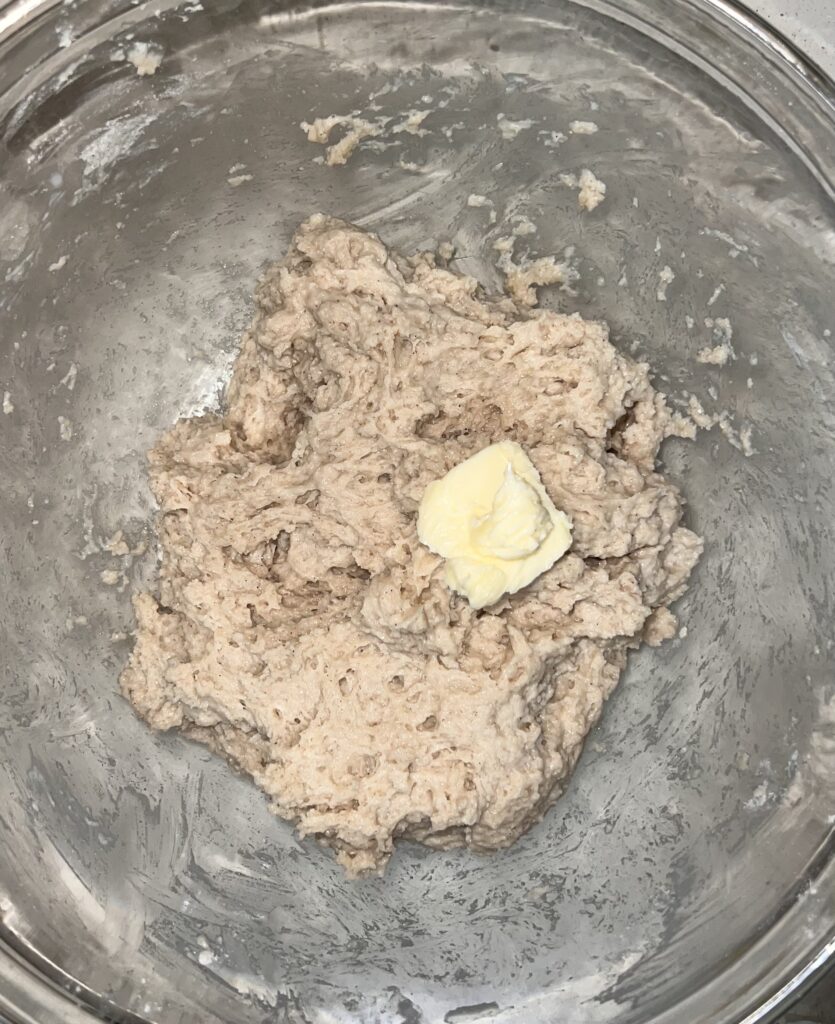
- After adding the liquid to the dry ingredients and kneading until all flour is absorbed, use the remaining half of the butter to knead the dough until it is smooth. This second addition of butter also adds to the softness and crispiness of the mahamri.
- When done kneading the dough, place it in a bowl, cover it with cling wrap let it rise for 2 hours. This step is crucial as the dough with yeast must rise before cooking.
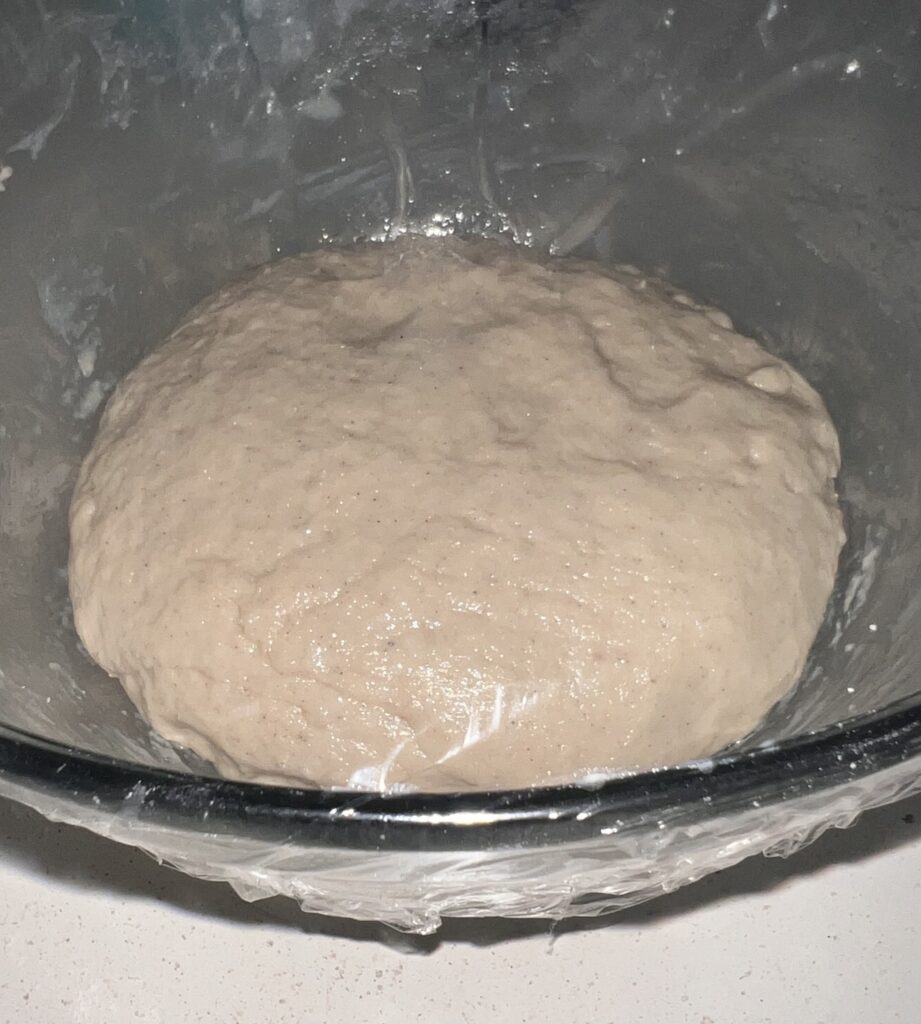
Part 2: Roll and cut the mahamri
- When the dough is done rising, knead it gently and just until it goes back to its original size. Do not overdo kneading at this point as it is unnecessary. Divide the dough into eight equal pieces, shape each piece into a neat ball, and set them aside.
- Roll out one piece of dough at a time. Note that the wider your circles, the larger the mahamri will be.
- Cut the rolled-out dough into quarters using a sharp knife. Set aside and repeat with the rest of the pieces before you begin to fry. Mahamri cooks quite fast, so it is not a good idea to have divided attention when frying them.
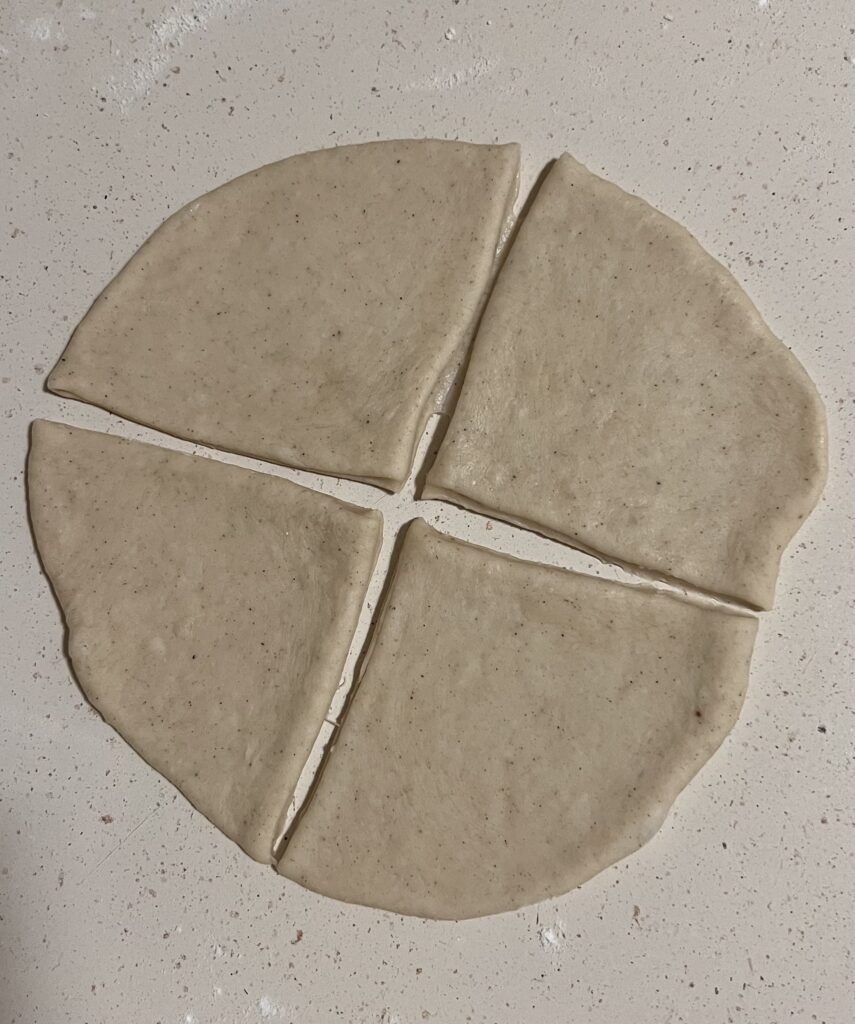
Part 3: Fry the mahamri
- Heat the frying oil in a deep enough pan on medium to medium-high heat. Do not use high heat as it will cause mahamri to darken on the outside while still raw on the inside.
- When the oil is hot and ready, place a few mahamri pieces in it gently and fry until they are golden brown. Flip the mahamri and fry until the other side browns too.
- Fry a few mahamri pieces at a time. Do not crowd them in the pan as each needs space to rise well.
- Remove the ready mahamri from oil and set them in a container lined with paper towels to absorb any excess oil.
- Mahamri is ready to serve. See serving suggestions below with links to awesome recipes.
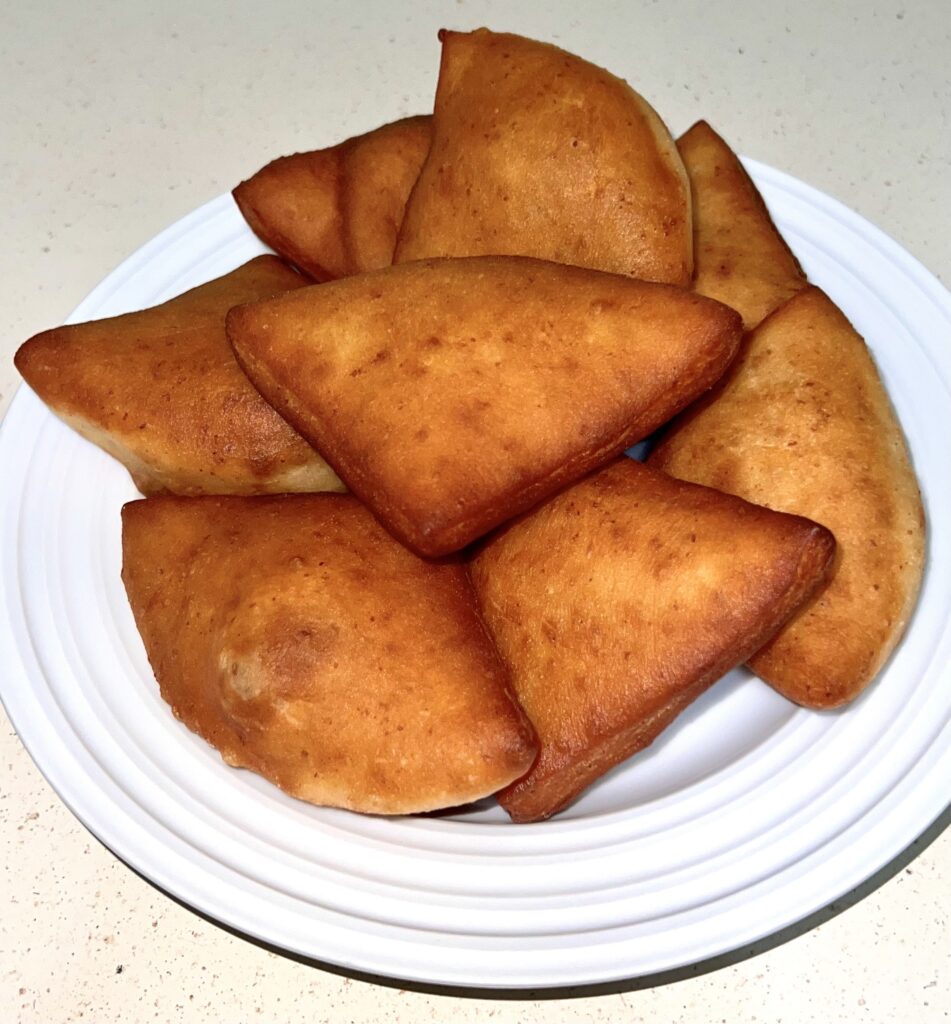
Serving Suggestions
Enjoy mahamri with Kenyan tea, coffee, fruit juice, or any other beverage of your choice.
Serve mahamri with this delicious lentil stew or with this green grams stew for a healthy and filling vegetarian breakfast or lunch.
Mahamri with this crispy baked bacon and moist scrambled eggs for breakfast.
How to Preserve Mahamri
- Allow mahamri to cool down fully before packaging to prevent sweating.
- Place mahamri in an airtight container to prevent drying out. I recommend Ziploc bags for this.
- Preserve the freshness of mahamri by freezing rather than refrigerating them. Frozen mahamri tastes like new up to two months later.
How to Reheat Leftover Mahamri
- Heat the frozen or defrosted mahamri in the microwave for about 50 seconds. Flip them over halfway through for even heating.
- Note that you can also eat mahamri at room temperature, just like doughnuts, muffins, croissants, etc. Get it out of the freezer an hour or two early and keep it in an airtight container on the countertop.
Print this Mahamri Recipe
Mahamri Recipe with Freshly Made Coconut Milk – Crispy and Tasty
Course: BreakfastCuisine: Swahili, East AfricanDifficulty: Moderately difficult8
servings15
minutes15
minutes122
kcal30
minutesFollow this step-by-step guide plus the additional notes and tips above on how to make the crispiest and tastiest mahamri. I hope you love it!
Ingredients
All-purpose flour – 3 cups
Yeast – 1 tsp
Butter – 2 tbsp
Dairy milk – ¼ cup (optional)
Coconut milk – ½ cup
Sugar – ½ cup
Salt – 2 pinches (optional)
Cardamom – 1 ½ tsp
Oil for frying
A little extra flour
Directions
- Combine all the dry ingredients (flour, instant yeast, ground cardamom, sugar, and salt) in a large bowl. Mix well.
- Add 1 tbsp of butter and rub it into the flour until well combined.
- Heat the dairy milk until hot, then combine it with coconut milk. Alternatively, combine the two and warm the mixture by making it stand in a bowl of hot water for about two minutes.
- Add the milk mixture to the dry ingredients and knead until all flour is absorbed.
- Add the other half of the butter and knead the dough until it is smooth. About 4 minutes. Then, shape the dough into a smooth ball.
- Drizzle some oil into the bowl and place the dough in it. Cover it with cling wrap and set it aside for 2 hours to rise.
- Knead the risen dough gently and form into a ball again.
- Sprinkle a little flour onto the counter and place the dough on it. Cut into eight equal pieces. Shape each piece into a nice, round ball and set them aside.
- Sprinkle flour sparingly on the counter and roll out one piece of dough at a time. Make them about 6 inches wide. The wider your circles, the larger the mahamri will be.
- Cut the rolled-out dough into quarters using a sharp knife. Set these to one side of the countertop or place them on a tray, then roll and cut the rest of the pieces.
- Heat oil in a deep enough frying pan on medium to medium-high heat.
- When the oil is hot and ready, place a few mahamri pieces in it gently and fry until they are golden brown. Flip the mahamri and fry until the other side browns too. Note: do not crowd the mahamri in the pan. They should not overlap at all as each needs space to rise well.
- Remove the ready mahamri from oil and set them in a container lined with paper towels to absorb any excess oil. Repeat the process until all pieces are done.
- Mahamri are ready to serve. See serving suggestions in this post.
